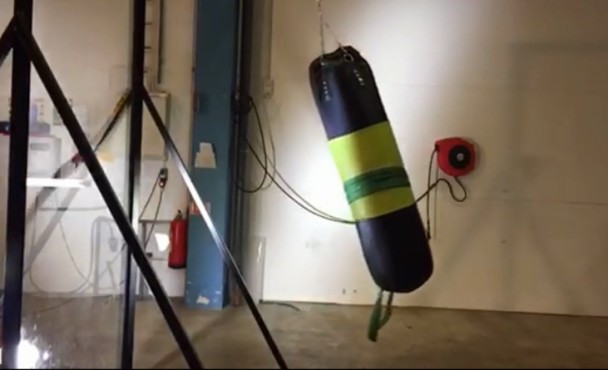Acrylic has replaced tempered glass at many hockey rinks for player and spectator safety reasons. Acrylic is much more flexible than the rigid tempered glass. It therefore reduces the potential for injuries such as player concussion. It also has good optical properties which allow spectators to get a good view of the action.
For many years other polymers were not considered as they were unable to match the optical properties of the Acrylic. However, with recent advances in the production process, the polycarbonate produced by HighLine has changed the equation.
For the same thickness of material, polycarbonate is between 20-25% more flexible than acrylic. This increase in flexibility significantly reduces the risk of concussions by players – a key focus of player safety advocates. Acrylic is typically used at 0.545″ thick. However, due to the unbreakable nature of the polycarbonate, it is possible to reduce the thickness. We would recommend 0.39″ or even 0.32″ for polycarbonate. This reduction in thickness further increases the flexibility and reduces the possibility of concussions. These flexibility results have been confirmed by mechanical testing. The impact on the shields by a hockey player simulated by using a weighted bag. This bag was swung at speeds representative of NHL player speeds. The test set up is shown in the attached photograph. Full test data can be provided by contacting HighLine.
Also, as polycarbonate is unbreakable, shattering acrylic shields around the rink can be a thing of the past; increasing both player and spectator safety. It also eliminates downtime to replace shattered shields during games or practices.
With the reduction in thickness, comes the reduction in weight. The much lighter weight reduces the change over time for rink operations management. It makes the shields quicker, easier and safer to install.
Recent advances by HighLine have allowed the optical properties of polycarbonate sheet to be significantly improved. These improvements allow acrylic to be displaced as the material of choice for hockey spectator shields. The optical appearance of polycarbonate is virtually identical to that of acrylic in an equivalent thickness. Because polycarbonate can offer greater protection at thinner thicknesses, the optical properties polycarbonate can actually exceed those of acrylic.
Due to the improved player and spectator safety of polycarbonate, it is starting to displace acrylic at European rinks. With the current interest in reducing player concussions to amateurs and NHL professionals alike, polycarbonate will replace acrylic. HighLine is at the forefront of bringing polycarbonate rink guards to the North American market.
HighLine Polycarbonate representatives will be walking the NARCE 2016 show in Columbus. If you would like to meet with us for a coffee and chat, please contact us.

